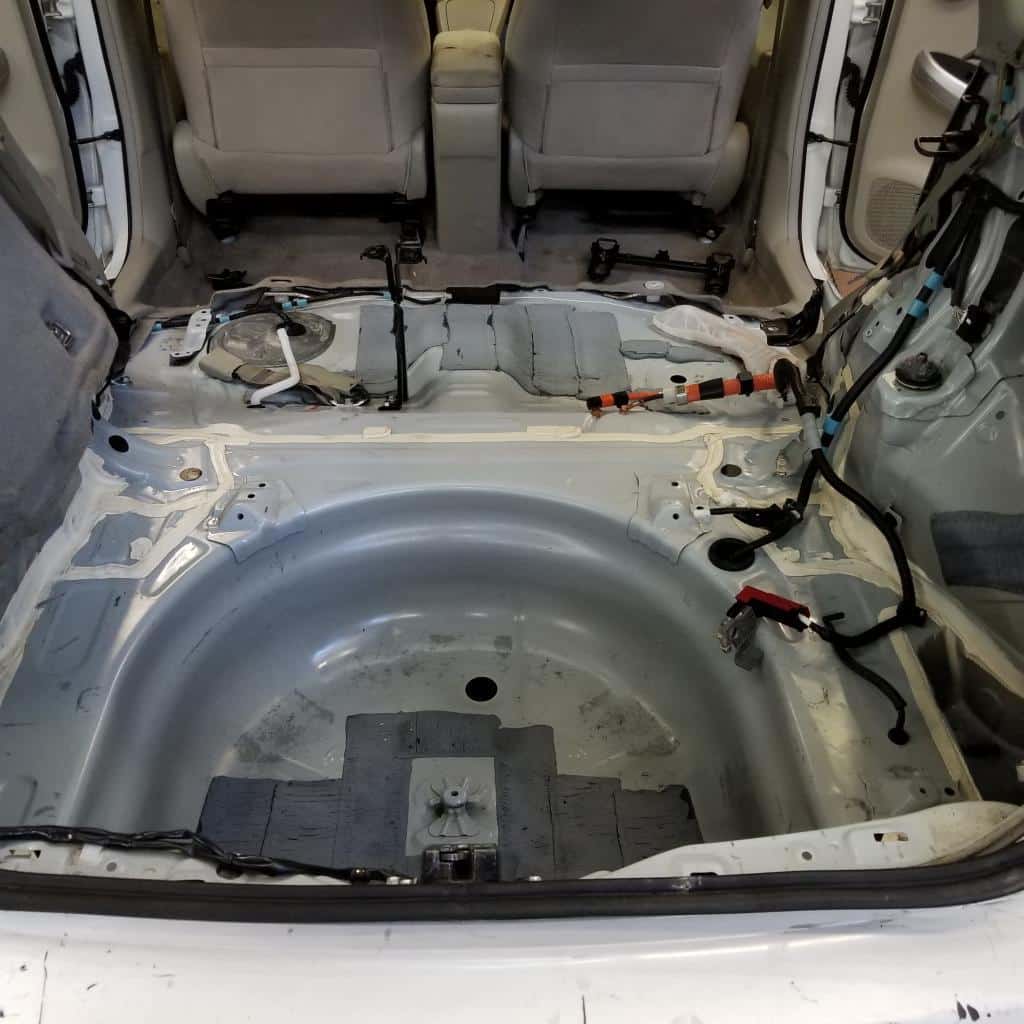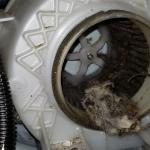You might be surprised how much damage rodents like mice and rats can do to a car; repairs can get really expensive. Whether they chew through wires or hoses, inconveniently die in the HVAC system, or as in this case, pee on the hybrid battery pack until it stopped working.
How to prevent rodents from living in your car
An ounce of prevention is worth a pound of cure. If your car sits a lot in a rural area, your car is in danger. Driving frequently seems to be one of the best solutions. I basing this on the fact that all of the cars we see in need of rodent damage repair show sign of sitting for long periods.
The other solutions have mixed results. Mint oil, ultrasonic noise makers, pepper spray, and Honda’s rodent wrap tape (which is as expensive as it is ineffective; save your money). This doesn’t mean you shouldn’t try though. Here’s some information on dealing with rodent infestations in vehicles.
How did the mice damage this Prius?
This tale of woe started with a 2010 Prius with a P0AA6 (loss of isolation), P0A85 (HV fan circuit), and P0A80 (Replace HV battery). The owner, being a good human, had cleaned and attempted to deodorize the car before bringing it in. An “A” for effort, but the car still smelled of urine and death. It was so bad that I wore a respirator during diagnosis and repair.
What does a P0AA6 mean?
P0AA6 is a “loss of isolation” or “high voltage leak” code. Basically this means that some part of the high voltage system is in contact with the body of the car. This doesn’t cause sparks of fire like a downed power line because the high voltage system isn’t chassis grounded like a 12V automotive system or earth grounded like our power grid. However, it is a safety issue so the Prius will prevent the car from restarting once it’s shut off.
P0A85 indicates the voltage is too high on the ground side of the HV blower fan motor. The blower motor is controlled with a controller unit (transistor) and monitored by the HV ECU. If the HV ECU sees 12V on the ground side of the blower when the blower is being commanded on, it sets a P0A85.
The P0A80 most often indicates that a single cell in one of the 14 blocks has failed. The way this is verified is through analysis of the freeze frame data. In this case the P0A80 is a permanent code and both permanent and history codes don’t contain freeze frame data. In this case there is a TSB indicating that debris in the HV blower fan can cause a P0A80, and we have a blower code too, so I’ll put the P0A80 on the back burner for the time being.
Time to clean up!
All the diagnosis revolves around the battery pack and there’s no way I’m climbing into the trunk with standing pools of urine and feces. I have a meeting after work and I don’t have a spare uniform. I vacuumed the trunk and then got busy with soap, bleach, a hose, and scrub brush.

Once the back of the car is clean enough to stand in, I start to remove covers from the battery to see what’s going on. Once the back of the car is clean enough to stand in, I start to remove covers from the battery to see what’s going on.
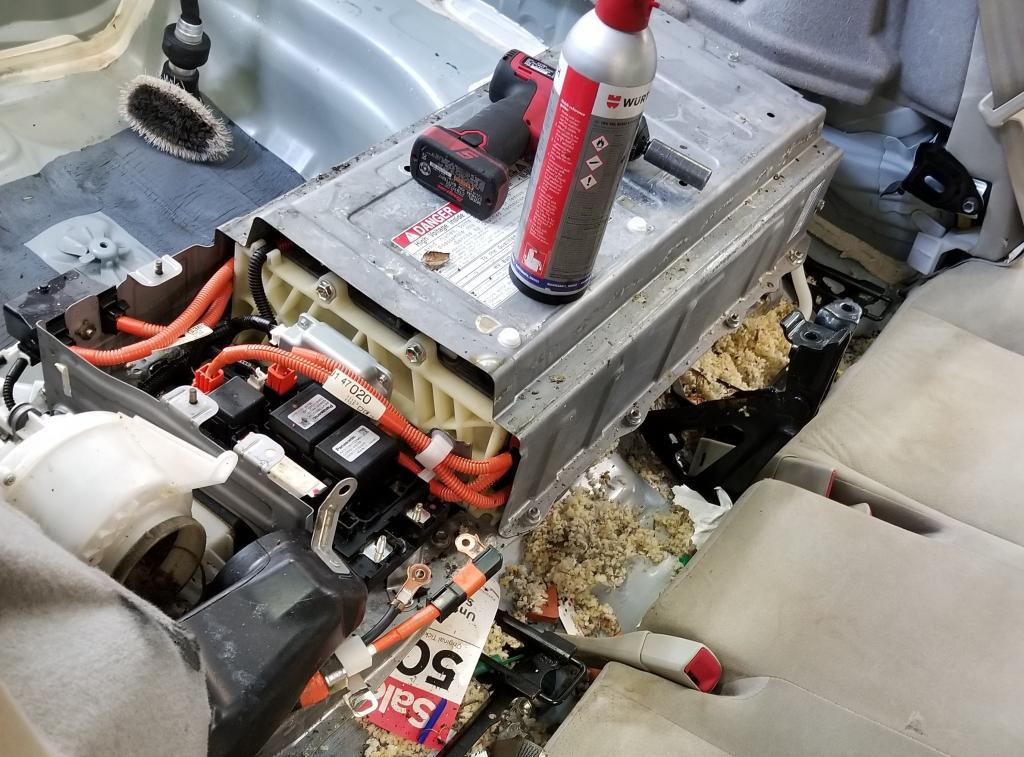
Avoid peeing on electric fences (and high voltage batteries!)
Mouse pee is a bit conductive so when it gets on high voltage terminals runs down the plastic insulator the high voltage can follow the same path…. well sort of. Since neither the positive or negative side of the battery is connected to the chassis, no actual current flows. However, there is a sense circuit that checks the resistance between both the positive and negative side of the battery and ground. If the resistance is less that 500 ohms per volt, a P0AA6 will set. By the way, that specification may need to be fact checked; I’ve also heard 100 ohms per volt.
The Toyota hybrids usually max out around 500V after the boost converter, so if 500 ohms/volt is correct, a code will set if resistance drops below 250,000 ohms, or perhaps there’s a safety margin built into the the testing. I don’t know. As far as manual testing with an insulation test meter, the specifications are always well over 1,000,000 ohms.
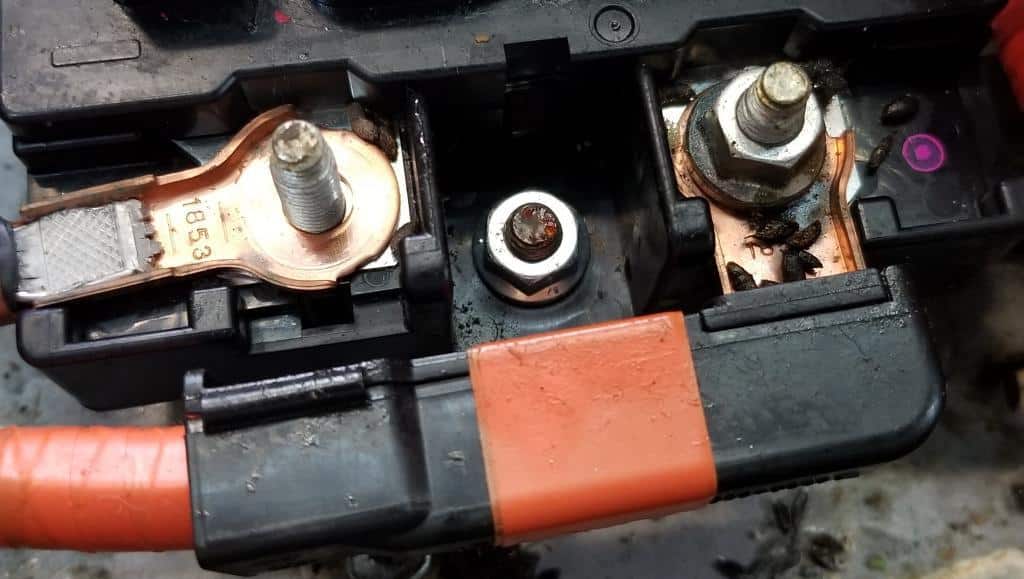
If you click the tiny image, you will see the source of the smell and the reason the fan doesn’t work anymore. I figured many people would be grossed out by this picture. I was. My teachers didn’t tell me this is what I’d be doing back in college.
Don’t try this at home
Can you spray water on a high voltage battery? Well I have a feeling that this isn’t a Toyota-approved procedure, but water here in the Bay Area is very soft and less conductive than urine and the vent under the battery is disgusting so this high voltage battery is getting a bath. Don’t try this at home.

Soap, water, bleach. The HV mechanics out there may notice the marker on the battery blades. Why would a 2010 Prius have a cheesy “remanufactured” battery in 2018? This car has 230,000 miles and the warranty on the battery pack is 10 years / 150,000 miles. By the way, reman batteries don’t last. Currently the only reliable option for battery replacement is a new battery from Toyota.
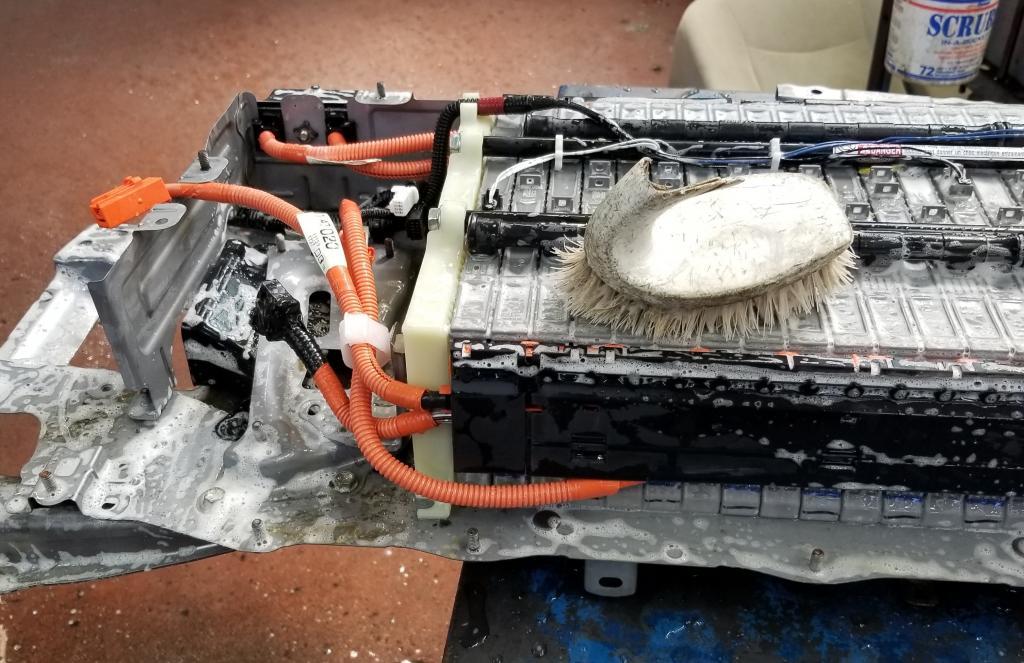
Clean and dry
Here we are about 6 hours later. Everything is clean and disinfected and ready to reassemble. In case you’re looking at this page and thinking, Hey, I’m going to bring my mouse car to Art’s for repair.”, please don’t. The only reason I agreed to do this repair is because the customer was nice and who else would have hosed off an HV battery?
